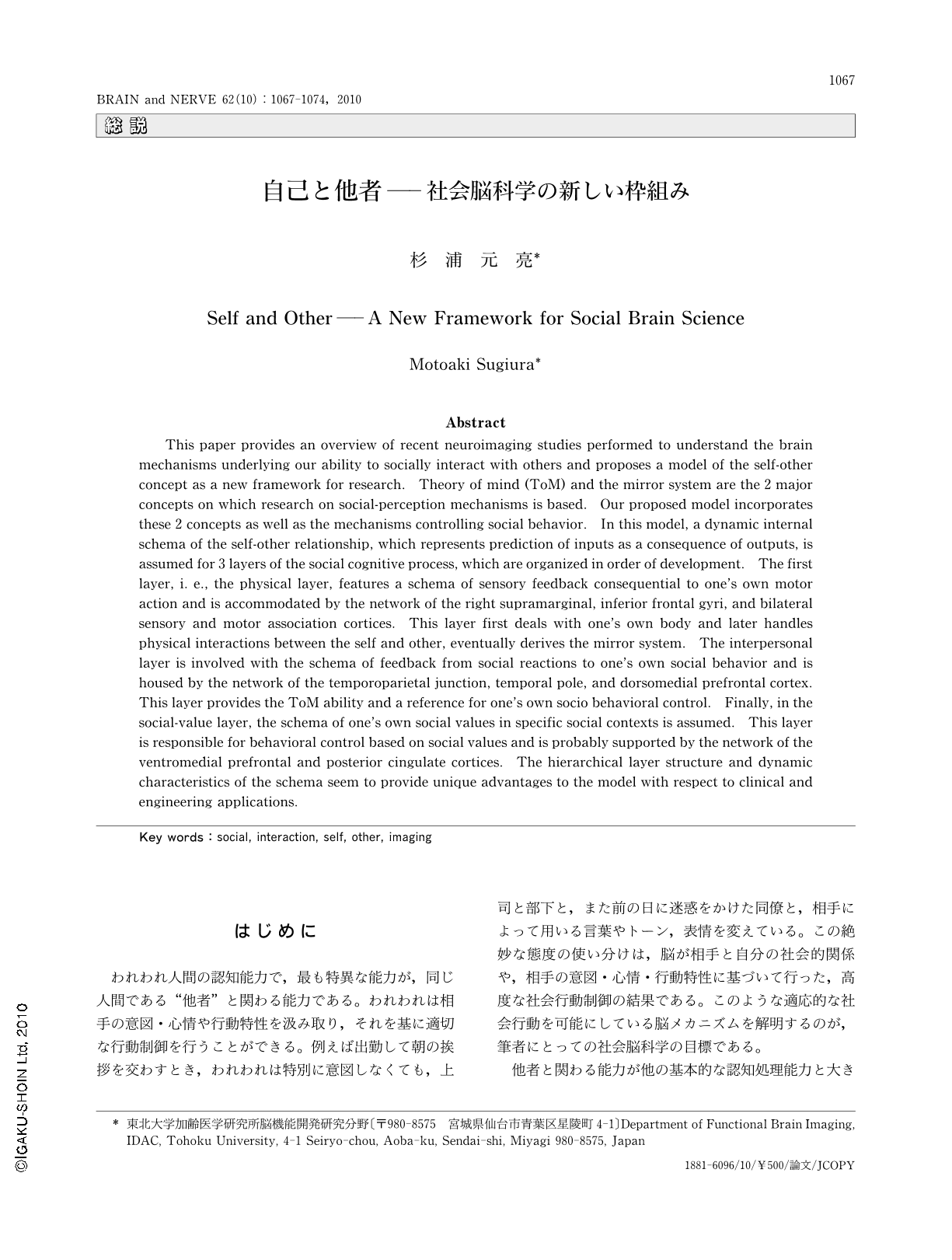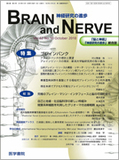Japanese
English
- 有料閲覧
- Abstract 文献概要
- 1ページ目 Look Inside
- 参考文献 Reference
はじめに
われわれ人間の認知能力で,最も特異な能力が,同じ人間である“他者”と関わる能力である。われわれは相手の意図・心情や行動特性を汲み取り,それを基に適切な行動制御を行うことができる。例えば出勤して朝の挨拶を交わすとき,われわれは特別に意図しなくても,上司と部下と,また前の日に迷惑をかけた同僚と,相手によって用いる言葉やトーン,表情を変えている。この絶妙な態度の使い分けは,脳が相手と自分の社会的関係や,相手の意図・心情・行動特性に基づいて行った,高度な社会行動制御の結果である。このような適応的な社会行動を可能にしている脳メカニズムを解明するのが,筆者にとっての社会脳科学の目標である。
他者と関わる能力が他の基本的な認知処理能力と大きく異なるのは,それが自他概念,すなわち自己と他者の関係についての情報処理能力を必要とすることである。適切な社会行動のためには,他者の自分に対しての意図・心情を理解するのが重要である。適切な行動制御のためには,自己―他者間の社会的関係の現在・過去・未来,を参照する必要がある。また,実空間における社会的関係の認識は,相手と自己との間の身体運動の時空間的関係の特徴的なパターン認識である。このような自他概念の処理能力は,動物種や小児の社会認知発達の程度を特徴づける重要な因子である1,2)。
自他概念の認知処理の究明について,これまでの社会脳科学は必ずしも十分に取り組んでこなかった。本稿では,まず他者と関わる能力の神経基盤研究の現在について,脳機能イメージング研究を中心に俯瞰する。そしてこれを自他概念の処理メカニズムとその発達過程の視点から整理し直した新しいモデルを提案し,社会脳科学の新しい地平を目指す。
Abstract
This paper provides an overview of recent neuroimaging studies performed to understand the brain mechanisms underlying our ability to socially interact with others and proposes a model of the self-other concept as a new framework for research. Theory of mind (ToM) and the mirror system are the 2 major concepts on which research on social-perception mechanisms is based. Our proposed model incorporates these 2 concepts as well as the mechanisms controlling social behavior. In this model,a dynamic internal schema of the self-other relationship,which represents prediction of inputs as a consequence of outputs,is assumed for 3 layers of the social cognitive process,which are organized in order of development. The first layer,i. e.,the physical layer,features a schema of sensory feedback consequential to one's own motor action and is accommodated by the network of the right supramarginal,inferior frontal gyri,and bilateral sensory and motor association cortices. This layer first deals with one's own body and later handles physical interactions between the self and other,eventually derives the mirror system. The interpersonal layer is involved with the schema of feedback from social reactions to one's own social behavior and is housed by the network of the temporoparietal junction,temporal pole,and dorsomedial prefrontal cortex. This layer provides the ToM ability and a reference for one's own socio behavioral control. Finally,in the social-value layer,the schema of one's own social values in specific social contexts is assumed. This layer is responsible for behavioral control based on social values and is probably supported by the network of the ventromedial prefrontal and posterior cingulate cortices. The hierarchical layer structure and dynamic characteristics of the schema seem to provide unique advantages to the model with respect to clinical and engineering applications.

Copyright © 2010, Igaku-Shoin Ltd. All rights reserved.


